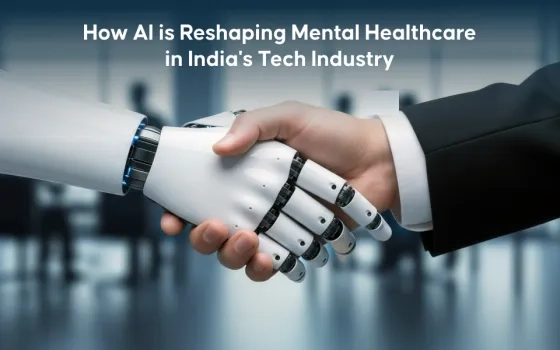
This piece has been authored by Dr. Chandrika Kambam (MBBS, MD, MBA, PGDMLE, ABMCQ), Vice President – Clinical Services, Columbia Asia Group of Hospitals – India
Disruption is the Healthcare Delivery
In 1948, the World Health Organization (WHO) defined health with a phrase that is still used today. “Health is a state of complete physical, mental and social well-being and not merely the absence of disease or infirmity.” [1] In order to deliver this state of wellbeing to its people countries started putting together the infrastructure, research, training, skill development and other such industries which together became a “Health Care Industry”. The modern health care is a conglomerate of products and services that are used to treat people with curative, preventive, rehabilitative and palliative care. Health care industry is one of the largest and fastest growing industry in the world.[2]
In India: [3]
- Healthcare has become one of India’s largest sectors both in terms of revenue and employment.
- During 2008-22, the market is expected to record a CAGR of 16.28 per cent.
- Indian companies are entering into merger and acquisitions with domestic and foreign companies to drive growth and gain new markets.
- The hospital industry in India stood at Rs 4 trillion (US$ 61.79 billion) in 2017 and is expected to increase at a Compound Annual Growth Rate (CAGR) of 16-17 per cent to reach Rs 8.6 trillion (US$ 132.84 billion) by 2023.
Despite these robust numbers our governments’ spending on healthcare needs is one of the lowest amongst the Developing countries.[4] India spends about 5% of the total expenditure on Health which is around 1.7% of the GDP. Public healthcare growth has slowed down over years. In 1998 about 43% of population was served by Public Hospitals and today only 30% use the Public health care system. [5]That means almost 70% of the health care needs are serviced by Private players, trust hospitals and non-profit institutions. This has led to the rapid growth of Private players who are growing at the rate of CAGR 16.5% year on year.[6] The costs of procedures or hospitalization has increased anywhere from 83% to 263% in 10 yrs. i.e. 2004 to 2014. There is also a wide variation of the cost for the same procedure in different hospitals.[7]It is also noted that 86% of rural Indian patients and 82% of urban Indian patients do not have access to any form of employer-provided or state-funded insurance.
Government of India is cognizant of this gap and is taking a 360^approach to help people of India get affordable, accessible, quality healthcare. They have capped prices for certain lifesaving drugs, stents and implants. They have created a common entrance examination throughout India. The Medical council of India is being replaced by National Medical Commission which has more representation across different states. Ayushman Bharath is world’s biggest and ambitious project to cover 10 lakh family appropriately 50 crore people based on socio economic status defined by the Socio- Economic caste census 2010.
Some of the states are also proactively implementing systems to monitor delivery of the healthcare services through State medical establishment acts.
Like the adage goes “Necessity is the mother of all invention” as we are grappling with inadequate funding, inefficient systems, lack of standardization on one hand and rising income level, ageing population, growing health awareness and changing attitude towards preventive healthcare on the other hand there lies a gap and an opportunity for many industries and entrepreneurs to come up with solutions that helps us to think out of the box and disrupt the current method of delivering health care.
Whereas there are disruptions in every area of the Healthcare industry, let me focus on the last leg that is delivery of care to the patient or customer:
Patients the consumer:
Invention of the mobile technology and e-commerce has changed the way people interact and lead their day to day lives. Most of their work is now done online or phone at touch of a button. People have begun to quantify their fitness and health using mobile devices, apps, gamifications etc.… They are looking for similar applications in health care. In this space we have fit bits, health, Diet exercise apps, patient engagement portals, integrated call centers by hospitals so on so forth.
Hospitals:
Hospitals are looking for solutions that will help them to standardize care delivery, minimize variations and thereby have better control on costs, quality and outcomes and systems that are intuitive and help them both from clinical and financial point of view. What started as simple electronic medical records in this space, today it is seeing a sea change from care pathways, to clinical decision support system, mobile technology for doctors to view reports and take action, telemedicine, teleICU finally utilizing all this data over years to come up with Artificial intelligence and machine learning process giving way for predictions and machine based diagnosis.
Insurance Providers:
Third party payers are looking for transparency in the billing, helping them to understand the cost of care, population demographics and disease prevalence that will help them to predict and plan their finances better. Though there are products in this field they are not yet matured to the extent they can make an impact.
Government agencies and regulatory bodies:
Government and regulatory agencies are looking for transparent care, ability to help understanding costs, monitor clinical and Para clinical staff for appropriate discharge of their skills to commensurate with their training and experience. Ability to study population medicine and understand the incidence and presence of diseases. Disruptions in these area are either absent or in a very nascent stage.
Challenges in the new ecosystem:
There are about 150 companies developing and working on Health care technology platforms. Their combined revenue generation is around 1billion dollars and going to increase 1.5 times by 2020[8].Globally the adoption rate of EHR in major countries are China (96%), Brazil (92%), France (85%), and Russia (93%) in this respect.[9]In India the adoption at level 3 EHR is around 31%. While 66 of the 100 largest hospitals in the United States offer consumers mobile health apps, only 2 percent of patients are using them[10]
Though there are many technological solutions developed and deployed to help overcome the challenges in the industry their use and implementation various widely. Information technology solutions used in public sectors such as national health portal, online registration system, Central drug standard control organization so on and so forth. In private sectors the use of technology is far advanced in the form of electronic medical records, apps, call center, point of care devices, internet of things. Telemedicine, tele-radiology etc…
The primary reason for this slowness, is because we are all working in silos. Because of the tight regulations and data security in healthcare it is quite hard to get a holistic picture of the problem, thereby making it difficult to find solutions. Lack of Interoperability between players results in enormous amount of duplication and there by reduces the adoption of the technology at various levels.[11] Compounded by that hospitals are suffering from having old legacy system which lacks agility and adoptability that is required for an ever changing business needs. Cost of changing such a system is huge. Along with this we lack proper policies on standardization requirement of hardware, software, data security, computer literacy.
Way forward:
In other areas, disruptive innovation achieves the extraordinary by an effort that is ordinary. In health care, disruption is an extraordinary effort at achieving not even the ordinary.[12] Though executives, clinical leaders, and clinicians all are pinning their hopes for disruptive innovation in health care on outside forces, the reality is that innovation has to integrate with existing models. In other words, outsiders might build it, but insiders have to accept innovation for real, sustainable change to occur.[13]The technology companies have to be in touch with the frontlines and make doctors and nurses integral part of the developing solutions. Their buy in is of paramount importance in the success of the product or any innovation. Hospitals should use technology to help ease the process and systems but not to lose touch with the reality about our core existence i.e. to make a difference in people life. Medicine is a uniquely personal and emotional arena — with humanity, compassion, and empathy at its core.
With changing behavior of consumers and knowledge about their health and wellbeing, the hospitals of the future will move from hospitals to home, utilize mobile technologies to stay connected with patients, care pathways to help standardize delivery of the care.[14] The hospital beds probably will get restricted to use for post-operative care, intensive care and such other high end work. Public insurance will gradually increase the spectrum of population they cover [15] and public private partnership has to happen in order to deliver care for such huge population base. Becoming cost effective is the need of the hour
Collaborative approach is the only way forward to solve the mammoth issues of health care delivery. Industry needs participation of Patients, Government, regulatory bodies, hospitals, technology companies, Pharma et. al. Together we can look at the data in a holistic manner and formulate policies and build regulatory frame work to safe guard the health of the public and deliver care to the last mile and last person which is cost effective and quality and with good clinical outcomes.
This is part of our ongoing series TechVoice, where we bring to you the leaders of the industry talk about the latest in innovation, technology and trends in their industry sectors.
If you want to contribute, write to sindhuja@nasscom.in
For more updates, follow NASSCOM CoE IoT-DSAI on LinkedIn, Twitter, Facebook, and Youtube
Footnotes:
[1] http://www.who.int/
[2] https://en.wikipedia.org/wiki/Healthcare_industry#cite_note-YahooFin1-1
[3] https://www.ibef.org/industry/healthcare-india.aspx
[4] World health organization and world health statistics 2017
[5] National sample survey office(NSSO)
[6] Frost and Sullivan LSI financial services, Deloitte
[7] BMJ Open. 2013; 3(6): e002844.Published online 2013 Jun 11. doi: 10.1136/bmjopen-2013-002844 PMCID: PMC3686227 PMID: 23794591 Costs of surgical procedures in Indian hospitals Susmita Chatterjee and Ramanan Laxminaraya
[8] NASSCOM https://economictimes.indiatimes.com/industry/healthcare/biotech/healthcare/indian-healthcare-it-now-a-1-billion-market-says-nasscom/articleshow/52048195.cms
[9] Indian Journal of Science and Technology, Vol 9(34), DOI: 10.17485/ijst/2016/v9i34/100211, September 2016
[10] https://www.healthcareitnews.com/news/poor-healthcare-apps-could-cost-hospitals-100-million-year-accenture-says
[11] https://hitconsultant.net/2018/05/01/crossroads-healthcare-disruption/
[12] https://www.kevinmd.com/blog/?s=Disruption+in+healthcare+delivery
[13] https://catalyst.nejm.org/disruptive-innovation-in-healthcare-survey/
[14] NAT health PWC funding Indian healthcare, catalyzing the next wave of growth.
[15] An HFMA value Project report: Strategies for restructuring costs structure
















